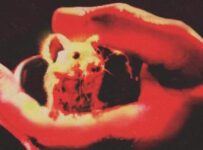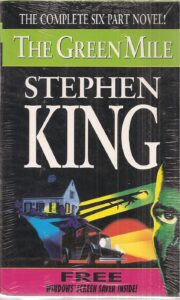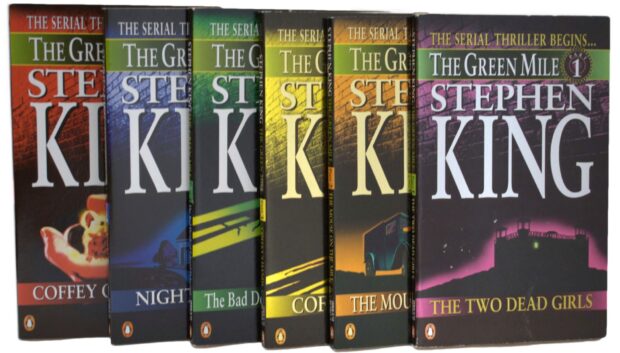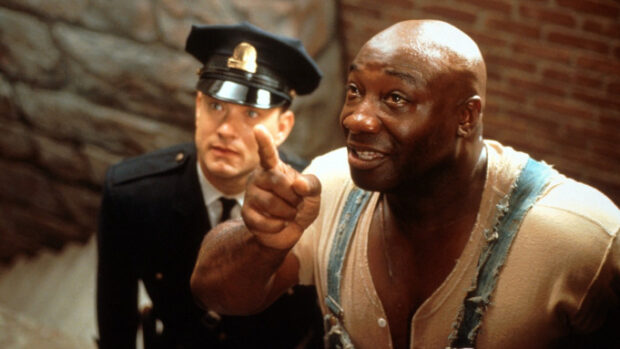Welcome back to Inconstant Reader, the feature column that explores Stephen King’s books in the order they were published — sort of! Originally published a six-part serial novel, let’s binge the whole thing and walk a mile in someone else’s shoes.
WARNING: You can’t walk the mile without revealing some spoilers.
Memory is a funny thing. It’s been 25 years since its release, but I clearly recall the first time I read THE GREEN MILE.
It was my final year of high school and I should have been studying. Yet the idea of a serial novel intrigued me. Maybe it was because I was studying that it grabbed me. After all, I could fit in bite-sized pieces of mystery in between brushing up on maths and German. Reflecting on that time, it’s probably lingered longer than any equation taught to me that year.
Looking back is a big part of THE GREEN MILE, King’s experiment in serial storytelling. Partly inspired by the way Charles Dickens and his contemporaries would release their works, the late literary agent Ralph Vicinanza (in one of at least three available introductions to the book) also speaks of King’s tradition of handing “friends and relatives” copies of the serialised The Plant as “funky Christmas cards” in the 1980s. That project was never finished, but the serial concept was revived over a decade later.
Released as monthly instalments between March and August 1996 as tiny chapbooks — 96 pages each, save for the last chapter — it’s narrated by Paul Edgecomb, former chief warden on Cold Mountain Penitentiary’s death row in the early 1930s. Called ‘The Green Mile’ for its long stretch of eponymous linoleum, the book begins as Edgecomb recalls the year of a terrible urinary tract infection. It was also the year that The Green Mile welcomed John Coffey, a giant of an African-American man convicted of raping and killing two young girls.
Yet as the plot unfurls, two things become evident: Coffey has a special gift, one that allows him to heal the sick, and he is entirely incapable of committing murder. We also meet abusive guard Percy, who claims to be well connected, who hurls most of his angst at Eduard “Del” Delacroix and his pet mouse Mr. Jingles. Each of these people is touched — literally and figuratively — by Coffey and irrevocably changed as a result.
Back in ’96, I would trudge up to one of two bookstores once a month at the mall. (In reality, I was there more often, but I knew the release date of these little pocket books and would be there day and date to grab them). So consuming them all in one piece, albeit with a few days to a week off in between chapters, was a completely different experience. Here it becomes evident that King was building on the ideas as they came to him, and we get a clear sense of him working out the parameters of the serial novel for the first time.
King’s series of short parts is all about building character, and each book tends to focus on a different one. As such, it was surprising to find Coffey’s almost total absence in Book 2, The Mouse on the Mile. The serialised nature naturally lends itself to cliffhangers, including the stomping of Mr. Jingles by Percy, something that King telegraphs much earlier in his foreshadowing manner. If you read the books in their original form, there’s a glaring continuity error: in Part 5, the other guards restrain Percy so they can sneak Coffey out of the prison to help a colleague. Yet at the start of the next book, Percy starts to rub his lips when the boys remove the tape from his mouth. An impressive feat given that he is meant to also be in a straight-jacket at this point. (The collected edition corrects this mistake).
It would also be slack if I didn’t address one of the major issues that will always remain with this book, the so-called ‘Magical Negro’ issue that has plagued Kings books from Dick Hallorann in The Shining and Mother Abigail in The Stand. For those not familiar with the concept, which has been around for at least a century, it’s the notion of a black character imbued with otherworldly powers used primarily to prop up white characters.
“John Coffey is not only King’s most famous Magical Negro,” writes Scott Woods, “but perhaps the greatest Magical Negro of all time, right down to the religious hat-tip of his initials.” Indeed, Spike Lee famously called his film counterpart (along with The Legend of Bagger Vance) a “Super-Dooper-Magical-Negro.” While most of the racist insults hurled at Coffey come from less enlightened 1930s characters — what Woods calls the ‘the Tarantino defence’ — some also find their way into the narrative. Which is not to imply any malice on the part of King, who carried with him unfortunate stereotypes of any white man of privilege born in the 1940s.
For Constant Readers, there are other inevitable comparisons. I mentioned Dick Hallorann before, and it is arguable that Coffey has more than a touch of the ‘Shining’ about him as well. Had he lived, he may have served some role in The Dark Tower saga as a powerful breaker. Yet, as his initials would imply, this innocent and gentle giant ultimately chooses to sacrifice himself under the weight of humankind’s evil and accepts his fate up on the cross (or in this case, the electric chair). It’s an emotional conclusion, partly due to Coffey’s infantalised fear of the dark, another indicator of King’s troubled history with writing non-white characters.
For the life of me, I couldn’t tell you a single factoid from my high school exams. I couldn’t tell you if I ever cashed in on the offer of the ‘free Windows screensaver!’ that came bundled with the collector’s box. Yet from the moment I cracked open the first volume, the memories of reading this came flooding back. Constant Readers will probably never have to walk death row, nor will they travel back in time to the 1930s. So, for all of its issues, THE GREEN MILE is also one of the most transportive of all King’s works, even if it takes us to places.
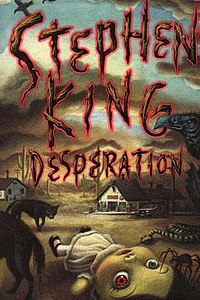
Next time, Inconstant Reader heads to the town of Desperation, a book with massive connections to King’s other work. While you’re here, go check out Batrock.net, where my buddy Alex Doenau is running through this Stephen King adventure with me.
